
The Grand Cascade and Samson are the most impressive and grandiose fountains in Peterhof, and one of the most outstanding structures in the world.
The Great Cascade and Samson fountains, together with the Basket Fountain, are a single architectural and water ensemble and the main fountain structure of Peterhof.
The architectural center of the Grand Cascade is the "Grottos of the Grand Cascade", which today is a museum.
The fountains are located in the Lower Park of the Peterhof Palace and Park Ensemble in Peterhof (Saint Petersburg).
The Great Cascade, Samson and Basket fountains visually merge into a single whole, being the largest fountain complex and the pearl of Peterhof. These fountains are simply impossible to perceive separately.
When you look at these fountains, especially from the terrace at the The spectacle makes an indelible impression with a fascinating effect-when the strength and power of the fountain jets merge with architectural perfection, and the surrounding area (parterres and slope), where the flower beds, Voronikhinsky colonnades, Samson Canal with fountain alley and other fountains of the Lower Park are located, only enhance the effect and complement the overall picture.
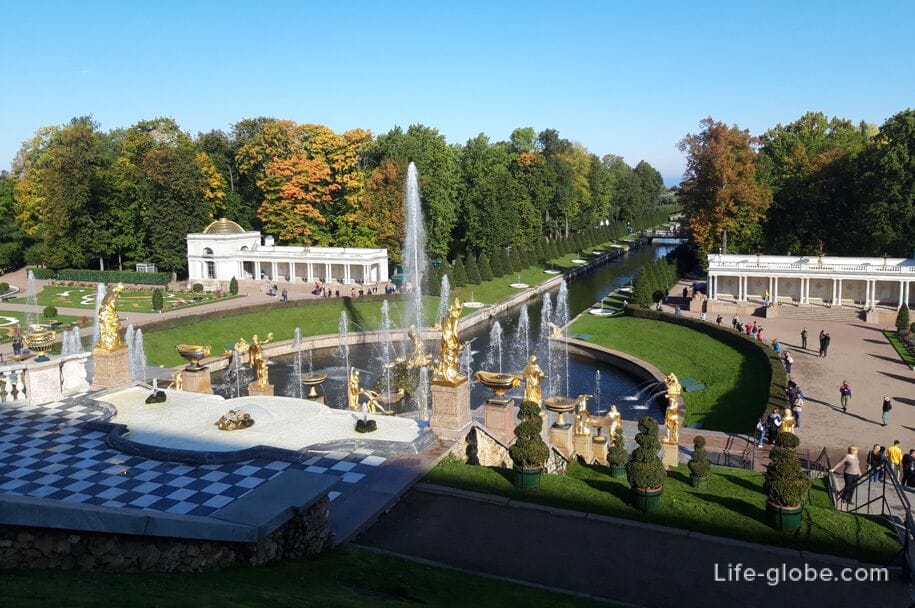
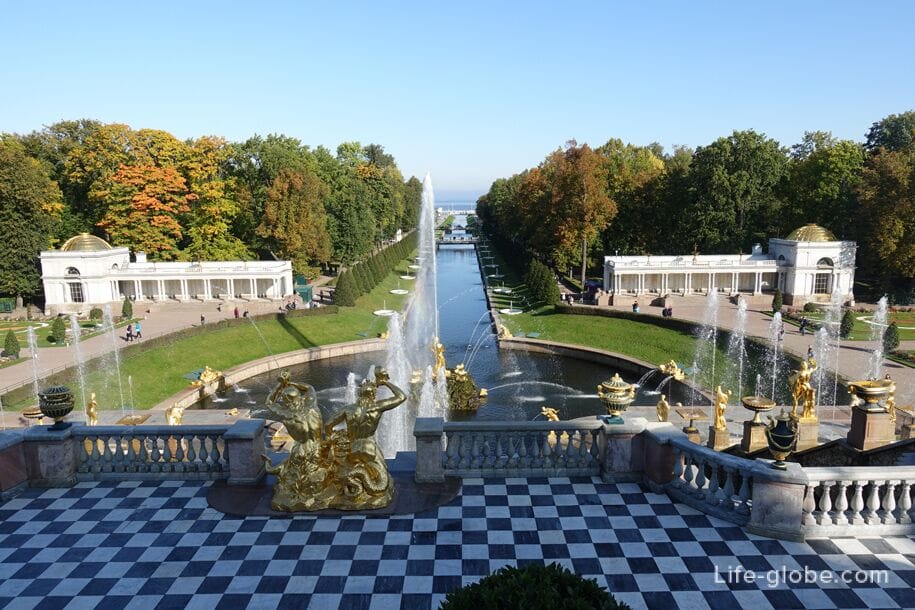
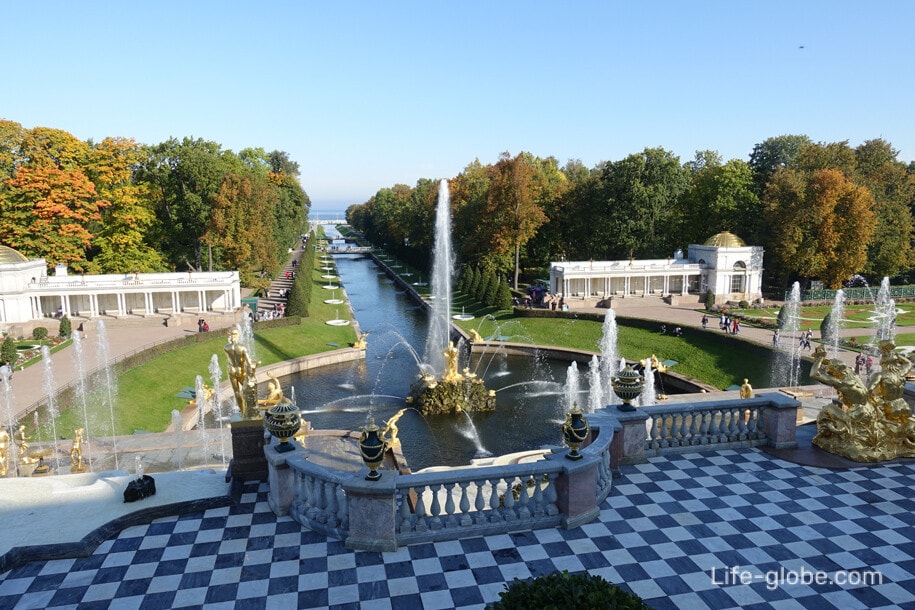
View of the fountains from the terrace of the Lower Park
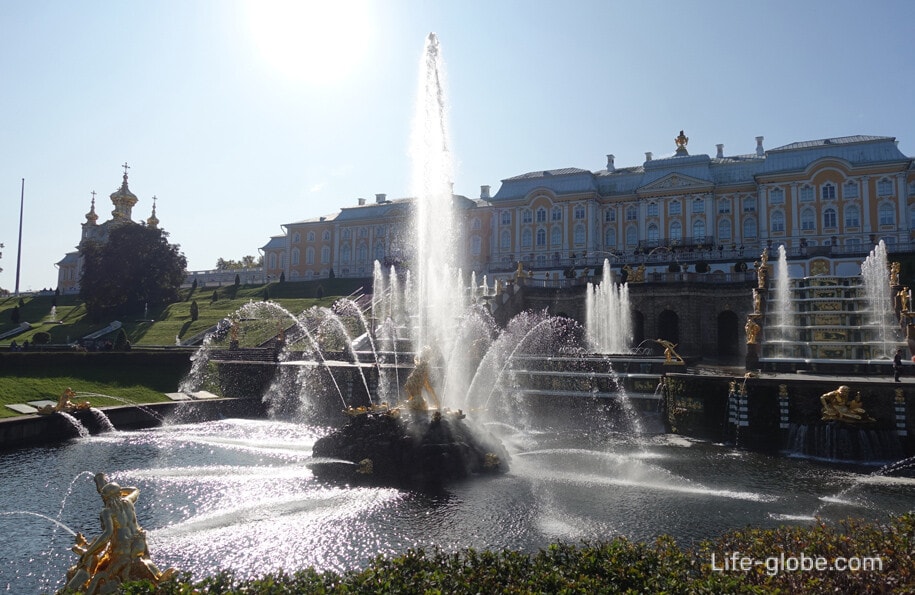
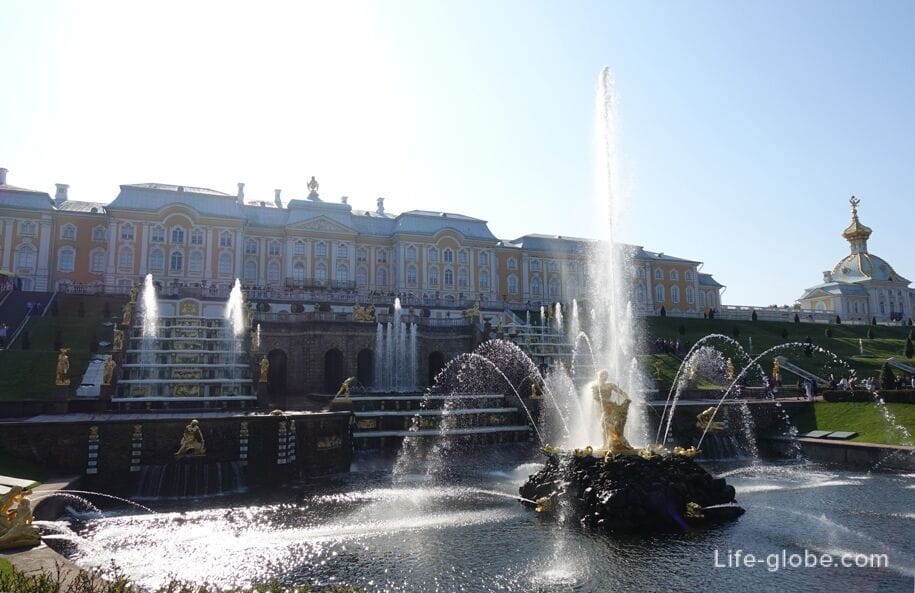
Video of the fountains of the Grand Cascade, Samson and the surrounding area
The idea of creating a cascade as the final detail of the sea front entrance from the Gulf of Finland to the royal residence (Grand Peterhof Palace), as well as the creation of the palace itself, belongs to Peter I.
The cascade was built simultaneously with the palace, being a kind of pedestal for it, corresponding to it in width (at that time the palace was small and was called the Upper or Upper Chambers) and forming a single architectural complex with the latter. The ceremonial launch of the fountains took place in August 1723.
The Cascade fountain consists of two massive seven-step staircases running down the slope in front of the palace, connected by arches of a Large Grotto.
The water movement in the cascade starts from the terrace above the Large Grotto, the water flows from two mascarons "Neptune" and "Bacchus", located on the wall of the Small Grotto. Then the water descends the stairs and passes under the base of the cascade, ending at the foot of the sculptures that symbolize the Russian rivers-the Neva and the Volkhov.
Water jets also gush from the stairs.
The vast area at the bottom of the fountain stairs turns into a central three-stage cascade, along which the waters fall into the bucket, where the Samson fountain is located.
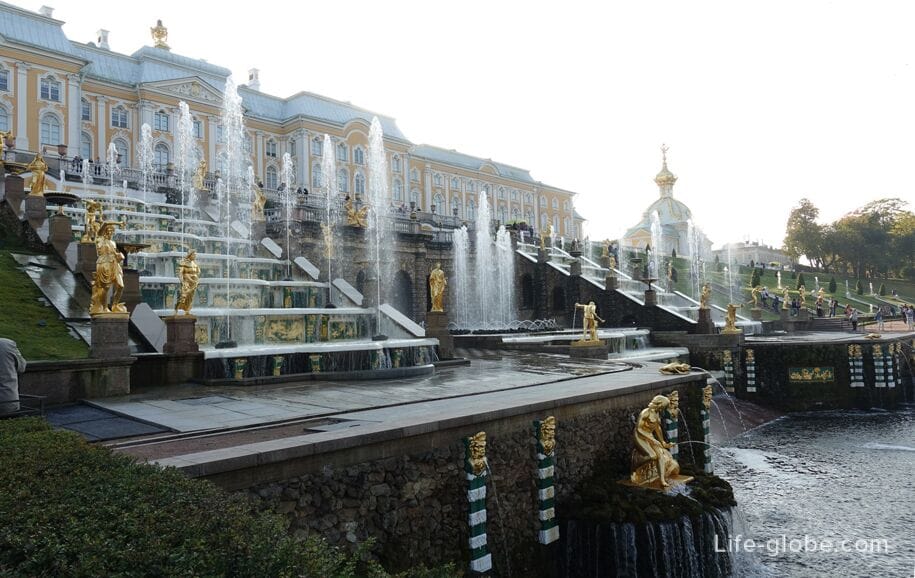
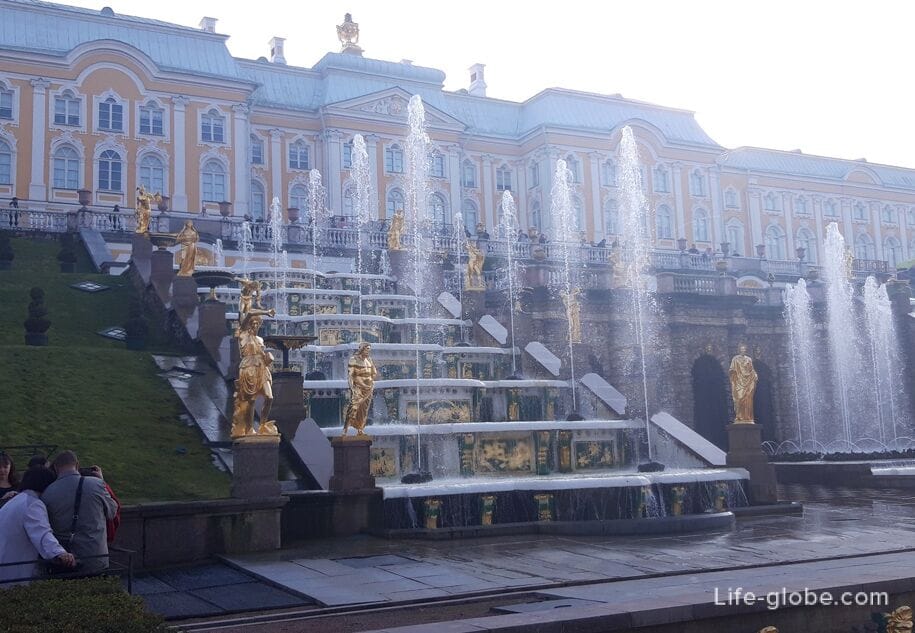
A significant role in the appearance of the fountain is played by the sculptural design, which in an allegorical form glorified the power of the Russian state and the victory of Russian weapons in the Northern War.
Initially, the entire decor of the fountain consisted of lead gilded sculptures, which by the end of the 18th century had lost their luster and by 1806 were replaced by bronze ones.
Today, the Grand Cascade's decorative decoration includes 37 bronze gilded statues, 16 vases, 29 bas-reliefs, hermes, brackets, mascarons, busts, dolphins, lions and frogs - a total of 225 sculptures in bronze, lead and marble.

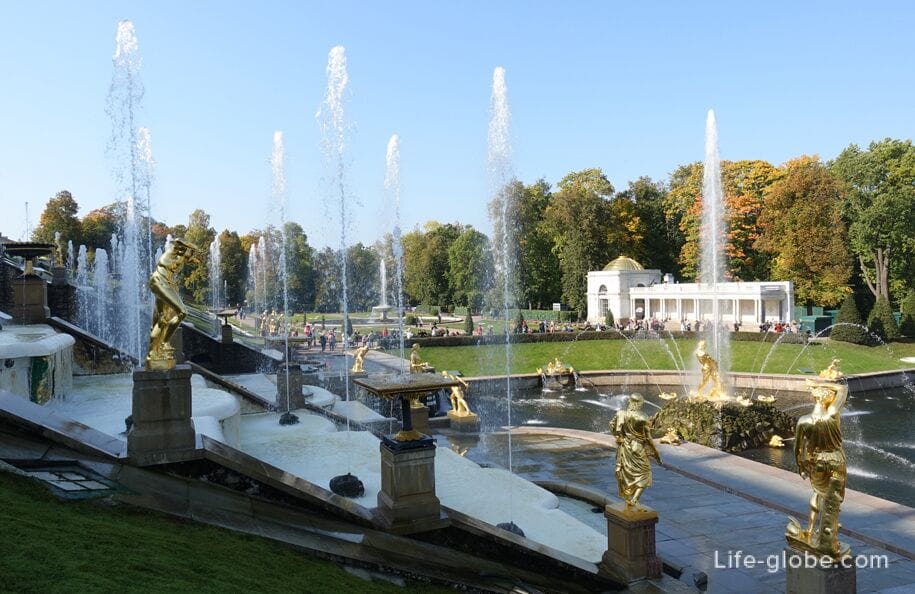
During some festive events in the Lower Park of the Grand Palace of Peterhof, the Grand Cascade Fountain becomes a stage platform for costume performances.
On the lower terrace of the Grand Cascade, in front of the entrance to the Large Grotto, there is a fountain "Basket".
The fountain has a tuff ring, from which there are sloping jets, intertwining like the rods of an openwork basket (hence the name of the fountain), from which nine powerful vertical jets of water rise.
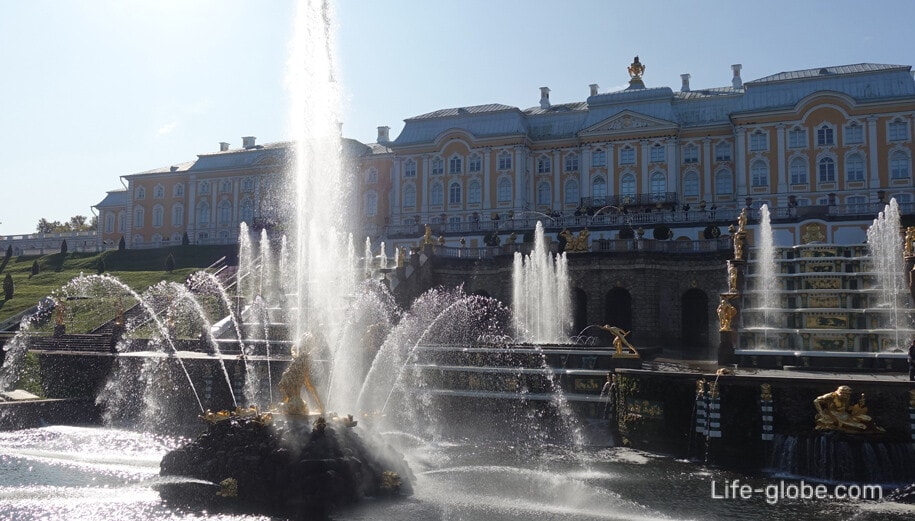
The center of the Grand Cascade is the grottos - the Upper and Lower ones, which, like the fountain, were built according to the idea of Peter the Great.
The grottoes are lined with tuff, decorated with fountains, marble and gilded sculptures.
The facade of the Large Grotto is cut through by five high arches decorated with gilded mascarons. On top of the Large Grotto there is a terrace leading to the Small Grotto. The border between the grottoes is a marble balustrade with figures of two bronze gilded Tritons.
The Large (Lower) grotto is a large hall with a high ceiling. In this hall there is a marble sculpture of the Peter's time by the Italian master Pietro Baratta and gilded electroplated copies of antique originals made in the 19th century.
Once upon a time, the owners and guests of Peterhof loved to spend time in the Big Grotto. In the grotto, according to the idea of Peter, but after his death, were installed fountains-firecrackers - "table with splashing" and "water curtains". In the center of the table were placed glasses of drinks and vases of fruit; but when the guest stretched out his hand to the table, then, from the tubes laid along the edge of the table, began to beat thin streams of water, drenching those gathered around. At the exit from the grotto, the guests were waiting for another surprise - a dense water curtain blocking the way. Such jokes were common in the 18th century. There are also other firecracker fountains in the Lower Park of the palace. Learn more about all the firecracker fountains...
Today, the grottos are a museum that you can visit for a fee (entrance to the Lower Park is also paid, fountains and grottos work in the summer season).
In the museum, during the transition from the Upper Grotto to the Lower One, you can see the original brickwork of the time of Peter I, as well as the pipes through which the water is directed to the fountains of the Grand Cascade and the scheme of the fountain conduit - a monument of hydrotechnical art of the 18th and 19th centuries.
The grotto presents an exhibition that introduces guests to the work of fountain masters of the past, the materials from which pipes were made and the original details of the sculptural decoration of the fountains.
From the Lower Grotto, guests of the museum can go to the area where the Basket fountain is located, and thus get into the very center of the water action.
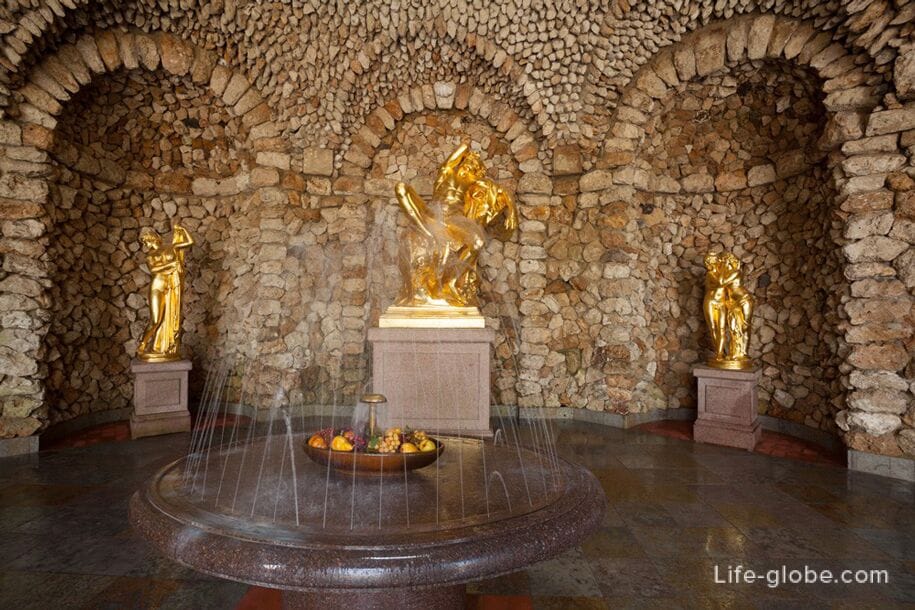
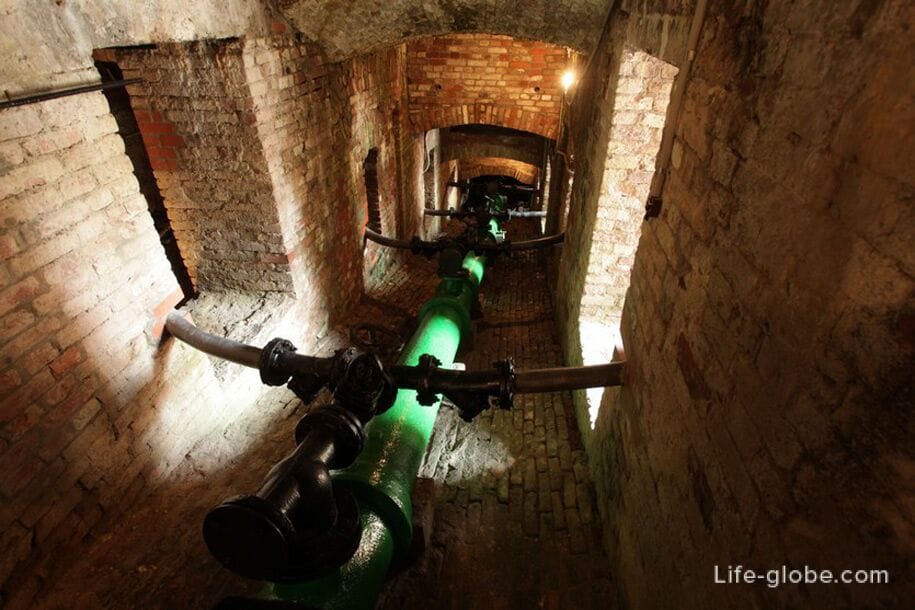

In the bucket-pool, where water flows from the above fountains, there is the most famous fountain of Peterhof - Samson, which is the symbol of Peterhof.
The Samson Fountain is a sculptural group called "Samson tearing the Lion's Mouth".
The fountain was installed in honor of the 25th anniversary of the Battle of Poltava - the decisive battle of the Northern War, held on June 27, 1709, on the day of the memory of St. Sampsonius the Pilgrim, who was considered the patron saint of the Russian army.
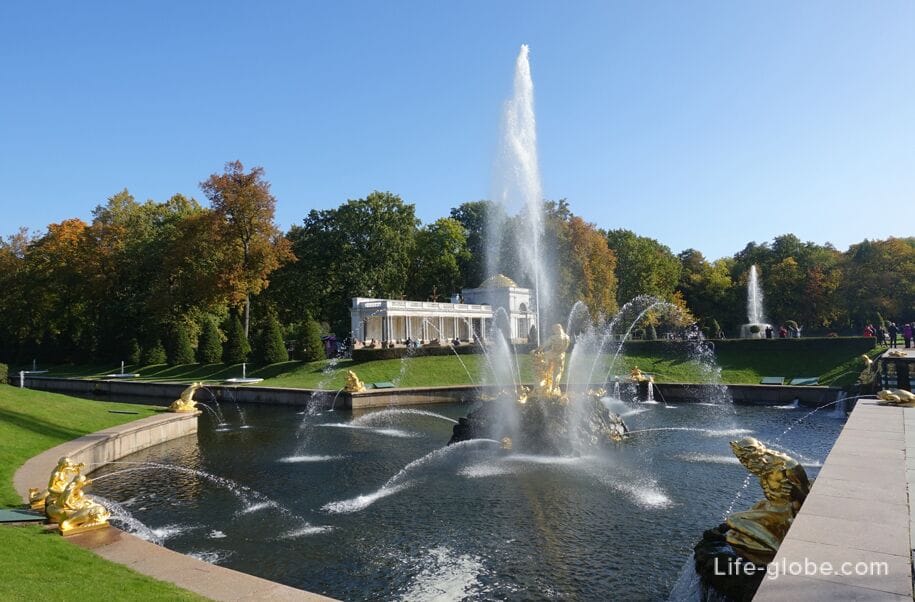
The sculptural group was cast from lead according to the model of B. K. Rastrelli and installed in a bucket in 1735. But, by the end of the 18th century, due to the fragility of lead, it lost its luster. In 1802, it was replaced by a bronze sculpture created by M. I. Kozlovsky. During the Great Patriotic War, "Samson" was lost. After the liberation of Leningrad, the sculptor V. L. Simonov and his assistant N. V. Mikhailov recreated the monument from pre-war photographs and old images. The "New Samson" was installed on the pedestal in 1947, becoming the hallmark of Peterhof.
The design of the fountain has an allegorical origin. Even during his lifetime, Peter I was compared to Samson - the biblical hero, whose first feat, described in the 14th chapter of the Book of Judges, was to defeat a young angry lion. The lion in the fountain, as part of the Swedish coat of arms, symbolized Sweden and its King Charles XII.
The sculptural composition of the fountain is set on a three-meter rock. Samson (the hero, or Peter the Great), depicted in the fountain, breaks the grinning mouth of a lion, from which a powerful water column with a height of 20 meters beats.
Eight dolphins placed around the sculpture of Samson symbolize the calm sea. Water jets shoot up from the dolphins. In the rock itself there are lions that represent the cardinal directions.
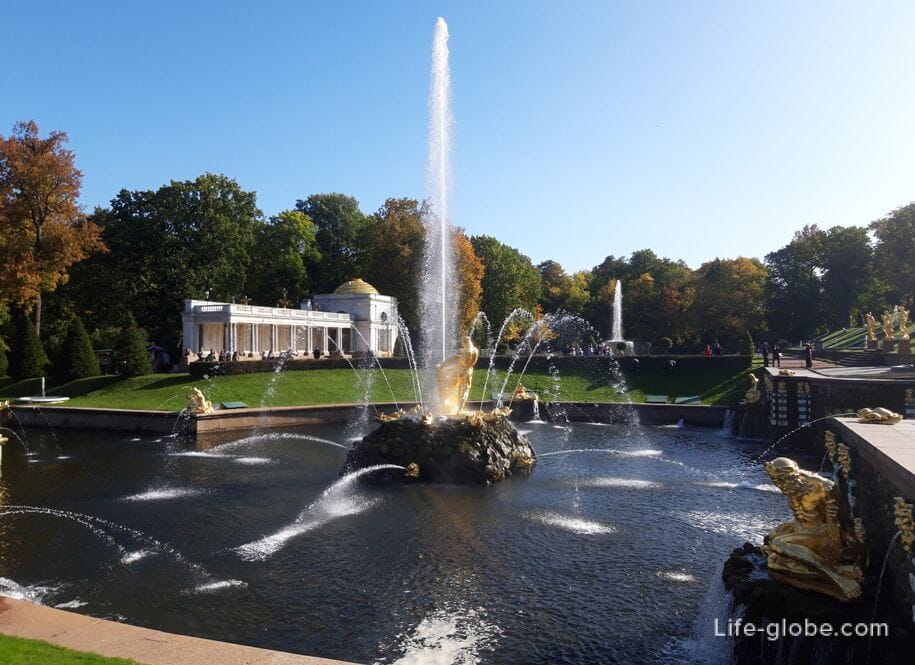

The water from the bucket, where the sculpture group Samson is located, goes through the channel to the Gulf of Finland.
This channel, which is called "Samsonovsky", originally served as the main entrance to the territory of the palace complex. Guests arrived in Peterhof by ship, after which they were transferred to boats and light vessels that passed through the channel to the bucket, which then served as a harbor (the Samson fountain under Peter I was not yet there).
Today, an Alley of Fountains runs along part of the canal, with 22 fountains ("Niche" fountains), and the canal itself is crossed by pedestrian bridges.
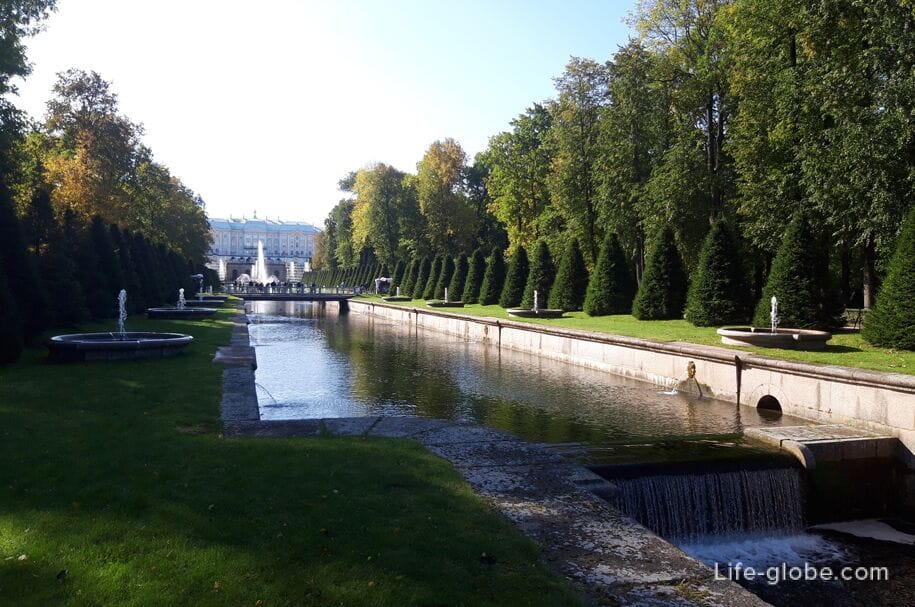
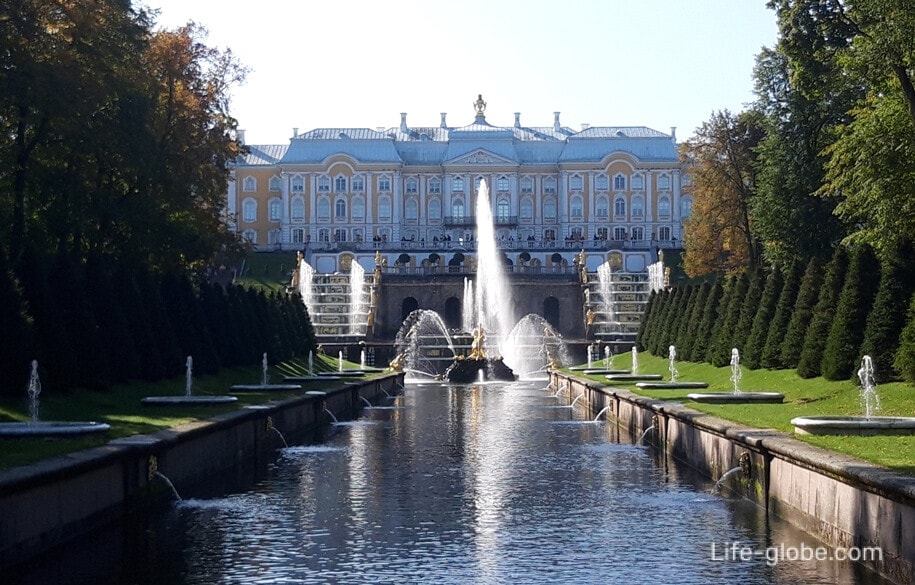
Fountains is located in the central part of the Lower Park of the Palace and Park Ensemble "Peterhof", which belongs to the State Museum-Reserve"Peterhof".
The fountains of Peterhof are closed for the winter (do not work) - from about the middle of October until the 20th of April.
In winter, when the fountains are not working, the entrance to the Lower Park is free (free of charge).
During the summer, the fountains and grotto are open and the entrance to the park is paid.
Tickets to the park can be purchased at the ticket offices located directly near the entrances to the park or in advance-online on the official website.
We recommend that you check the working hours of the park and fountains, as well as the conditions of visiting and the cost of tickets, on the official website of the State Museum-Reserve "Peterhof": peterhofmuseum.
You can visit Peterhof with one of the excursions
All the ways to get to Peterhof from St. Petersburg (the airport and the city center) can be found here →
Near the Palace and Park Ensemble "Peterhof" you can stop
The 4-star Novy Peterhof Hotel features a restaurant, bar, parking, tour desk, spa area with indoor pool, gym, steam bath, Finnish cedar sauna and aroma sauna.
The modern-style rooms at the hotel are equipped with a TV with satellite channels, free Wi-Fi, a safe, bathrobes and slippers, a hairdryer and free toiletries. Some rooms have a seating area.
The room rate can include: breakfast, breakfast + dinner or breakfast + lunch + dinner. Link to the hotel
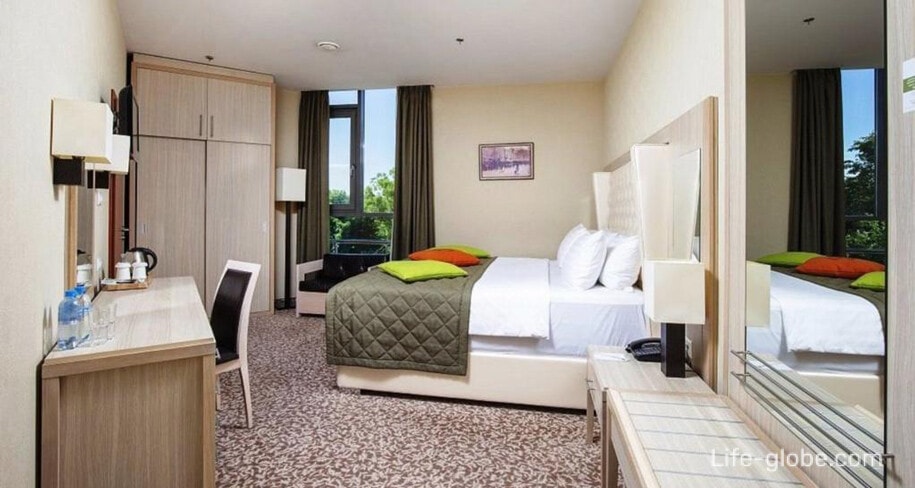
EGO-LOFT Apartment (Holgin Pond) they offer views of the lake and the city.
The apartmentfeatures air conditioning, a balcony, free Wi-Fi, a flat-screen TV, a washing machine, a bedroom, a kitchen with a dishwasher and a microwave, and a bathroom with a hairdryer and free toiletries. Link to the apartment
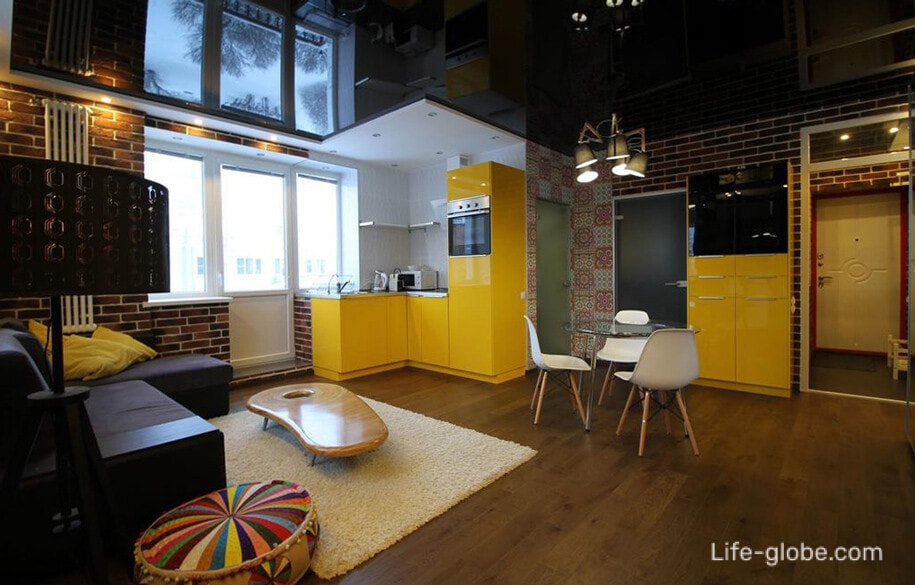
Severnaya Venezia Apartment с features a balcony with lake views, free Wi-Fi, a children's playground, a garden and a shared lounge.
The apartmentfeatures a bedroom, a flat-screen TV with cable channels, an equipped kitchen with a microwave and a refrigerator, a washing machine, and a bathroom with a shower. Link to the apartment
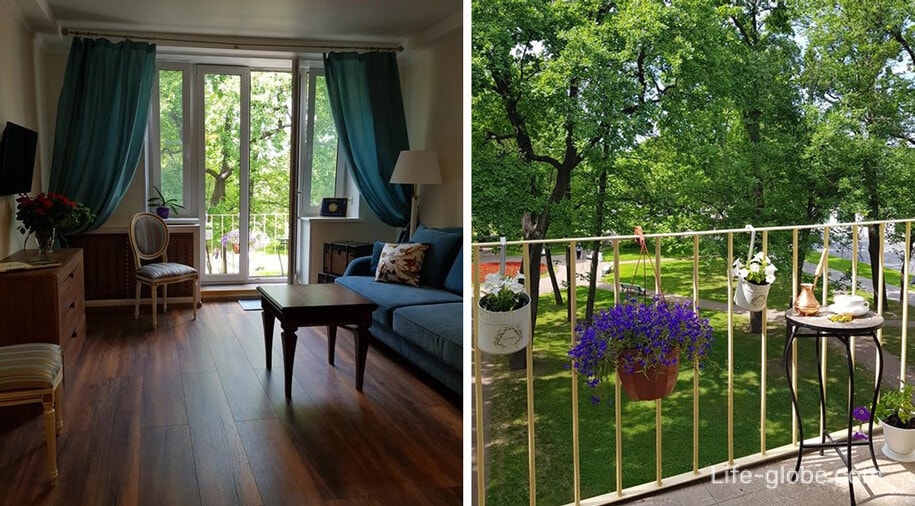
All accommodation facilities in St. Petersburg, including in the city center and in Peterhof, can be viewed and booked here